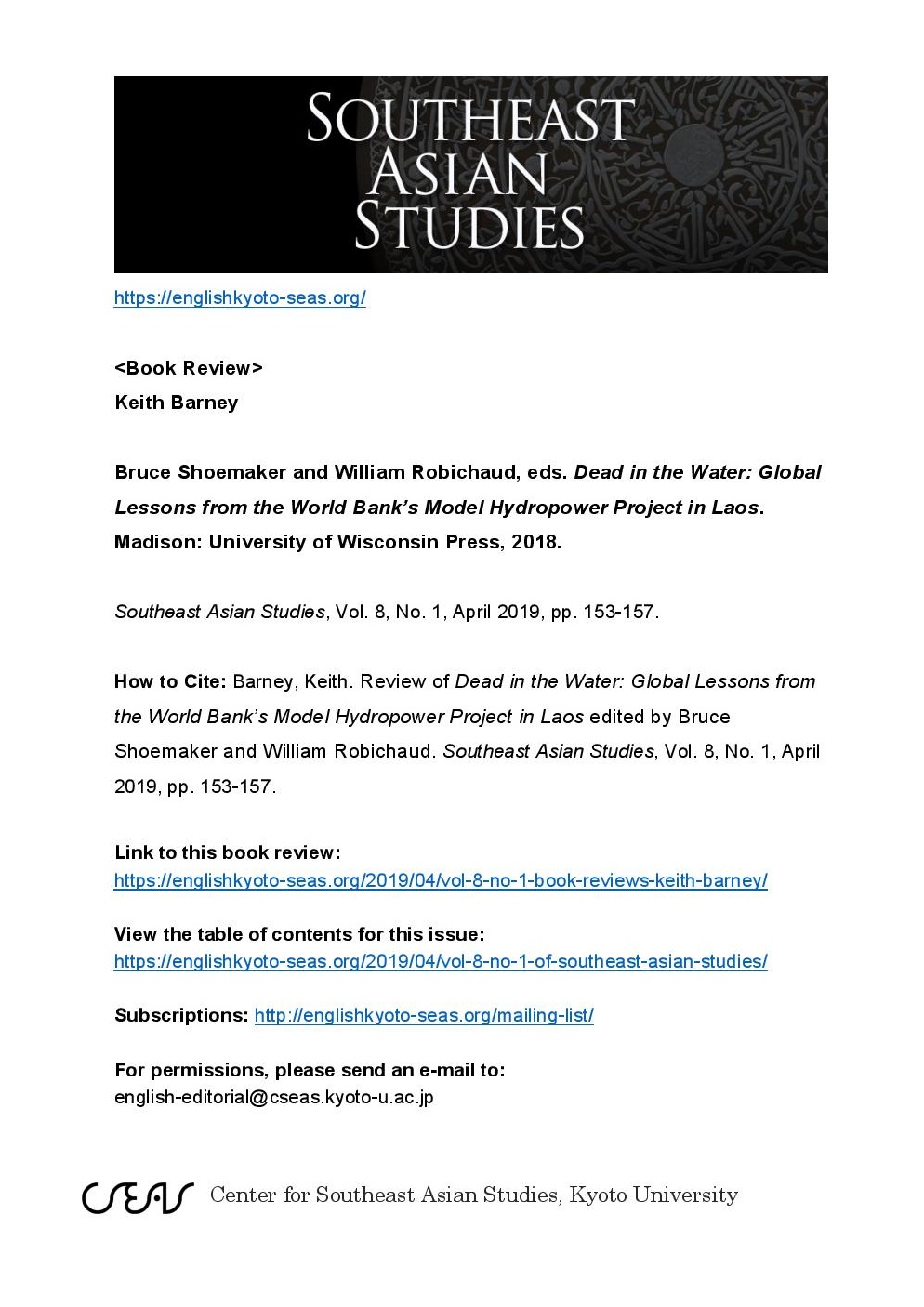IN THE NEWS: "Book Review 'Dead in the Water: Global Lessons from the World Bank’s Model Hydropower Project in Laos' from Southeast Asian Studies"
/By Keith Barney [Southeast Asian Studies, Vol. 8, No. 1, April 2019, pp. 153-157]
Tens of millions of dollars have been spent on environmental and social mitigation programs for the Nam Theun 2 (NT2) hydropower project in Laos, extending over the full footprint of the project zone from the Vietnam border down to the confluence of the two impacted rivers with the Mekong. What are scholars, development practitioners, and concerned citizens to make of this high-profile infrastructure project? Costing about US$1.45 billion in the end, it made such a significant investment in addressing its socio-environmental externalities, but as the authors of Dead in the Water argue, has still come up short.
. . .
Dead in the Water does not specifically set out to theorize a new framework for understanding the NT2 project or the implications of hydropower development in Laos. Its aims are more applied and grounded, and constitute a basic warning that “supporting high-risk projects—those with the potential for severe social and environmental impacts—in countries with significant governance issues is fundamentally inappropriate and likely to cause more harm than good” (p. 298). The approach is set by some well-crafted chapters by the lead editors: independent researcher/consultant Bruce Shoemaker, and conservation biologist William Robichaud, both whom have long-term experience in the country. While none of the other chapter contributors are Lao nationals, which is a shame but understandable, given the constraints with freedom of speech in the country; almost all of the other writers have spent decades working and researching about Lao resource management issues.
****
Read the full review here
Citation: Barney, Keith. Review of Dead in the Water: Global Lessons from the World Bank’s Model Hydropower Project in Laos edited by Bruce Shoemaker and William Robichaud. Southeast Asian Studies, Vol. 8, No. 1, April 2019, pp. 153-157
Carl Middleton of CSDS contributed the chapter “Branding Dams: Nam Theun 2 and its Role in Producing the Discourse of “Sustainable Hydropower”” to the book (see here)
Buy the Book: Dead in the water: global lessons from the World Bank's model hydropower project in Laos (University of Wisconsin Press, 2018)





![PRESS RELEASE: Book Launch: “Living with Floods in a Mobile Southeast Asia" [18 December 2017]](https://images.squarespace-cdn.com/content/v1/575fb39762cd94c2d69dc556/1513552193141-TEOUY3B952FPT1D3SL0K/Photo+6.JPG)